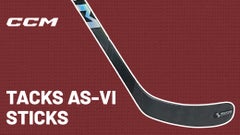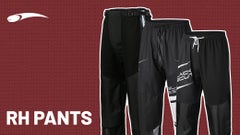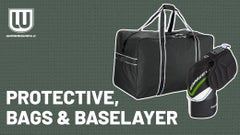An Explanation of Inline Skate Brake Types
The most critical obstacle to overcome for new or less frequent skaters, is the ability to stop with confidence and control when skating. The rollerblading world has seen some welcome changes to the braking system over the years. With the new innovations it’s become easier and safer for bladers to come to a stop, as well as improve brake life.
Let’s dive into the different types of brake options out there, how they work and what brands you’re likely to find them on.
Standard (Traditional) Brake
This is the most common type of brake which is commonly found pre-attached to most recreational and fitness skates across brands. A replaceable rubber pad and plastic holder (mount or housing) is attached to the right skate. It can be removed as a skater gets more comfortable. This requires replacing the brake axle with a non-brake axle that may or may not be included with purchase. Depending on the skate brand, the brake can be removed and swapped to the left skate for left foot dominant skaters.
In order to stop with a standard brake you’ll lift your toes up and roll your heel back to engage the brake with the ground. The more pressure that is put between the brake and the ground will help to decrease your speed. If not replacing the brake pad prior to it wearing to the plastic holder, the entire brake mount would need to be replaced (this is the case for any brake).
HABS - Height Adjustable Brake System
A proprietary braking system developed by Powerslide in cooperation with Swiss scientists, a braking system that is more functional when the braking angle is higher. The Height Adjustable Brake System (HABS) allows you to adjust the height of the brake pad which allows you to tailor-make the brake height to your skating style, braking habits and prolong the life of your brake. With the ability to adjust the brake height you can help prevent wearing down your brake too quickly and allow you to have the skate at a comfortable height for you as a skater.
It’s important to know that the HABS brake mounts are only compatible with Powerslide skates using a HABS compatible frame. Not all Powerslide skates come with a HABS brake, but a good amount do. Removal and installation is simple thanks to a rear axle that is threaded at both ends. This allows the brake to screw on and off without need of a new axle, or removing the axle at all. Be sure to check the Inline Warehouse description pages for brake compatibility or call our customer service team during business hours at 1-800-366-3070.
ABT - Active Brake Technology
Arguably the biggest technological advance in braking systems since the brake itself, Rollerblade’s Active Brake Technology (ABT) was designed for those who need the extra balance and support from the beginning. It is the ultimate confidence builder and provides the ideal stability when braking because it allows the skater to keep all wheels on the ground and the brake at a consistent height for maximum power. The ABT system is activated by sliding the brake foot forward and engages the cuff brake with all wheels remaining on the ground. The ABT brake is compatible and specific to Rollerblade ABT models only.

Rollerblade Macroblade ABT

ABT Brake
Synchro Brake System
A braking system that is yet to be released as of this writing, but is set for release late 2021 from Powerslide. The Synchro models from Powerslide feature a cuff activated braking system which makes it similar to the ABT style brake from Rollerblade. The main difference in the braking technologies is that Powerslide’s cuff braking system attaches to a braking slat that is inside the frame. This provides a lot more security and braking action because all wheels are being stopped at the same time and allow for a more controlled stop.
Specific to Powerslide Synchro models, it also allows for multiple adjustments to increase and decrease braking sensitivity without having to change the pressure you put on the skate when braking. All in all, we’re very excited for this new technology and can’t wait to try it out with you.
No Brakes
Skating with no brake either sounds like a very dangerous situation or it’s something you’re ready to give a shot now that you’ve gotten comfortable on your skates. Once you’ve gotten comfortable controlling your speed, there are numerous different ways to stop on your skates whether it’s a T-Stop (aka Drag Stop), Plow Stop, Power Stop, or a Power Slide (hockey stop). These variants of stopping have different degrees of difficulty and will take some practice, but once mastered, give you a feeling of freedom and confidence that truly makes skating even more enjoyable.











